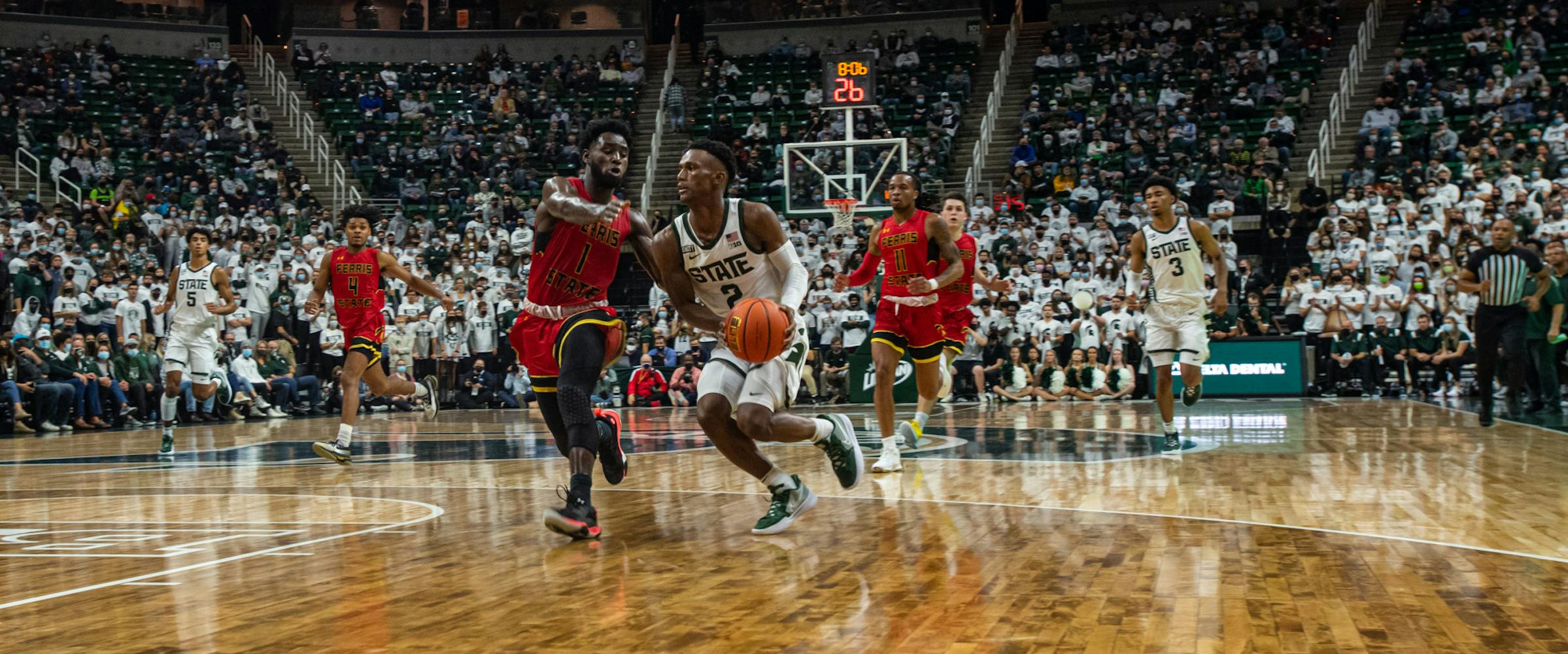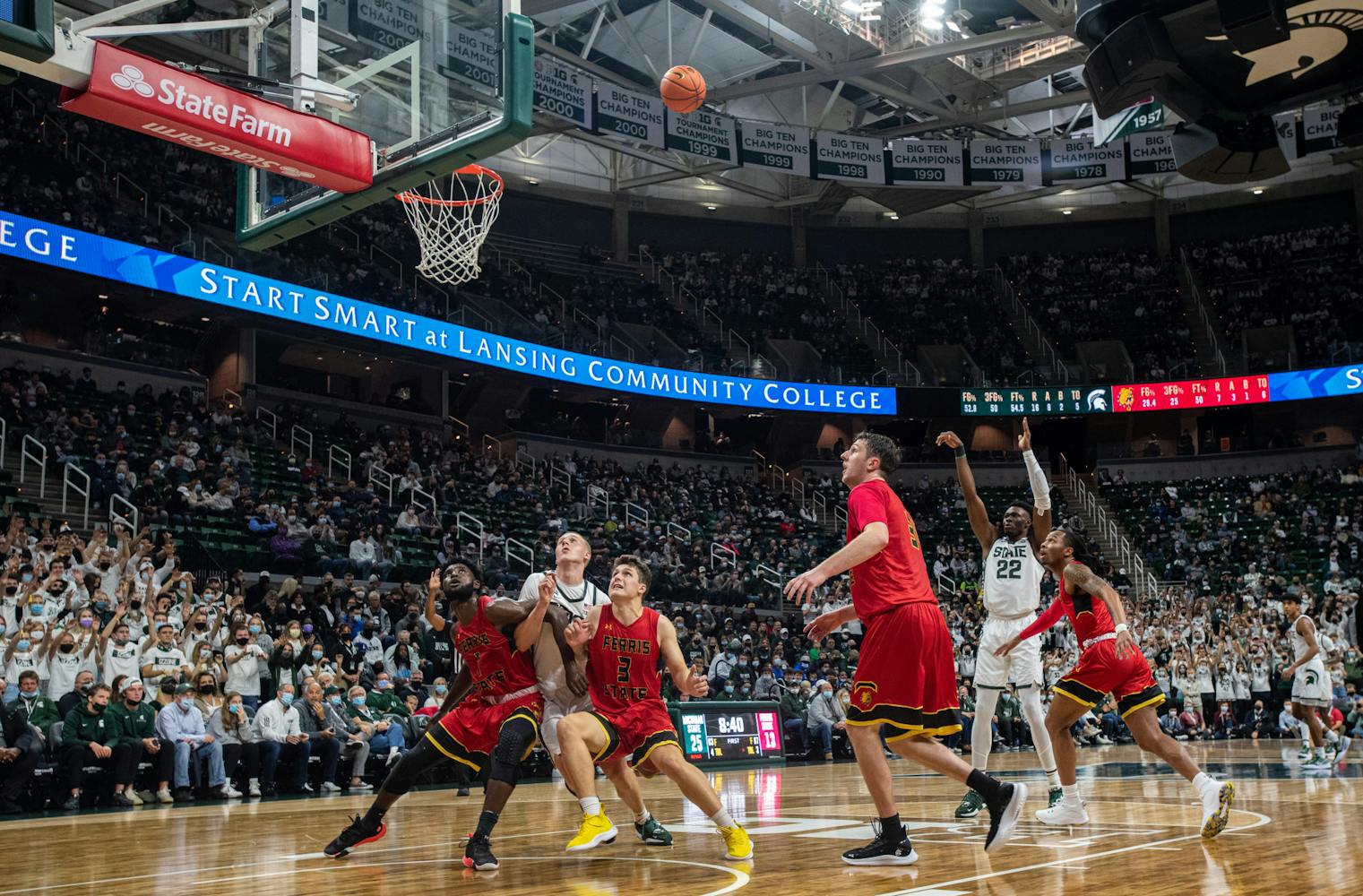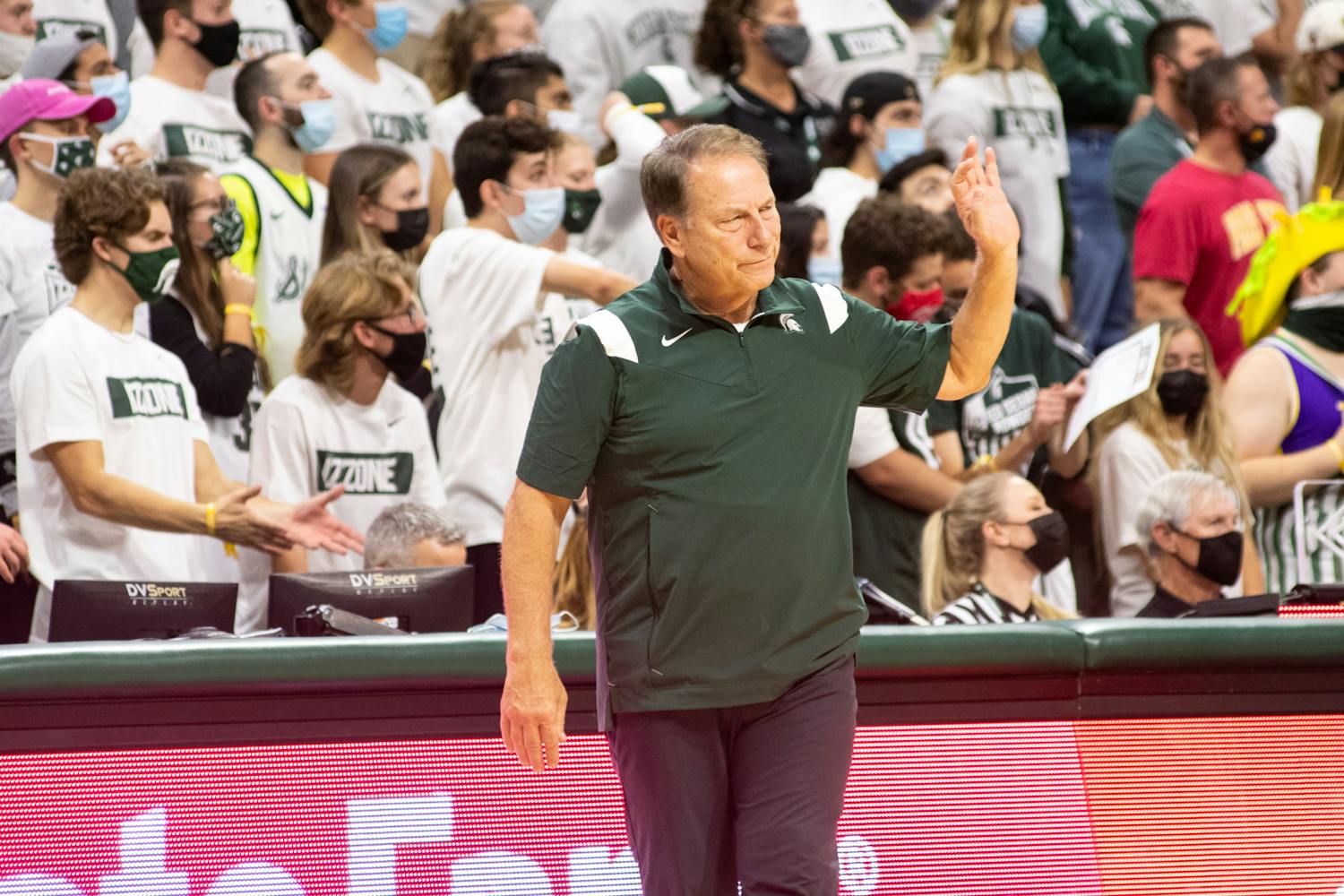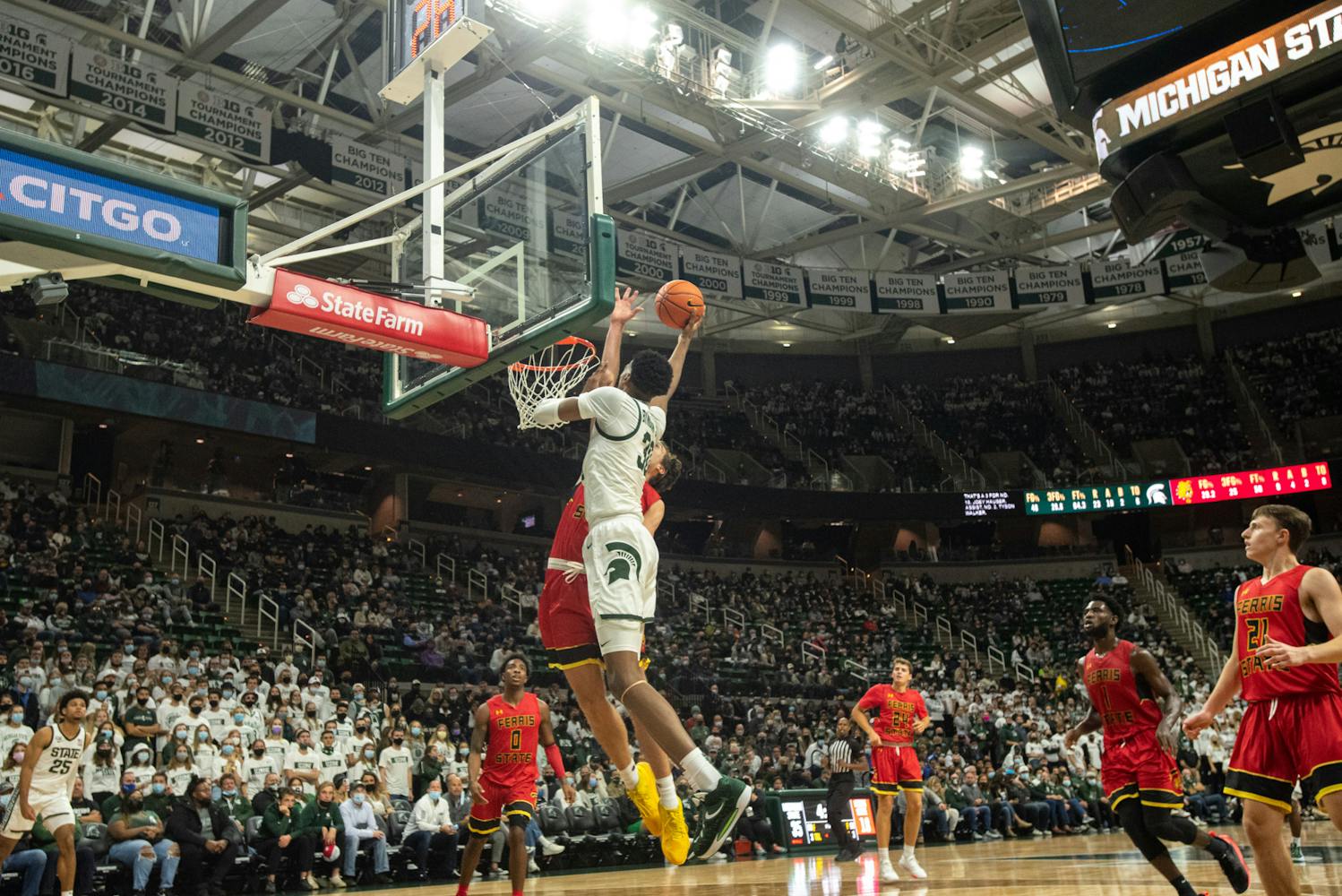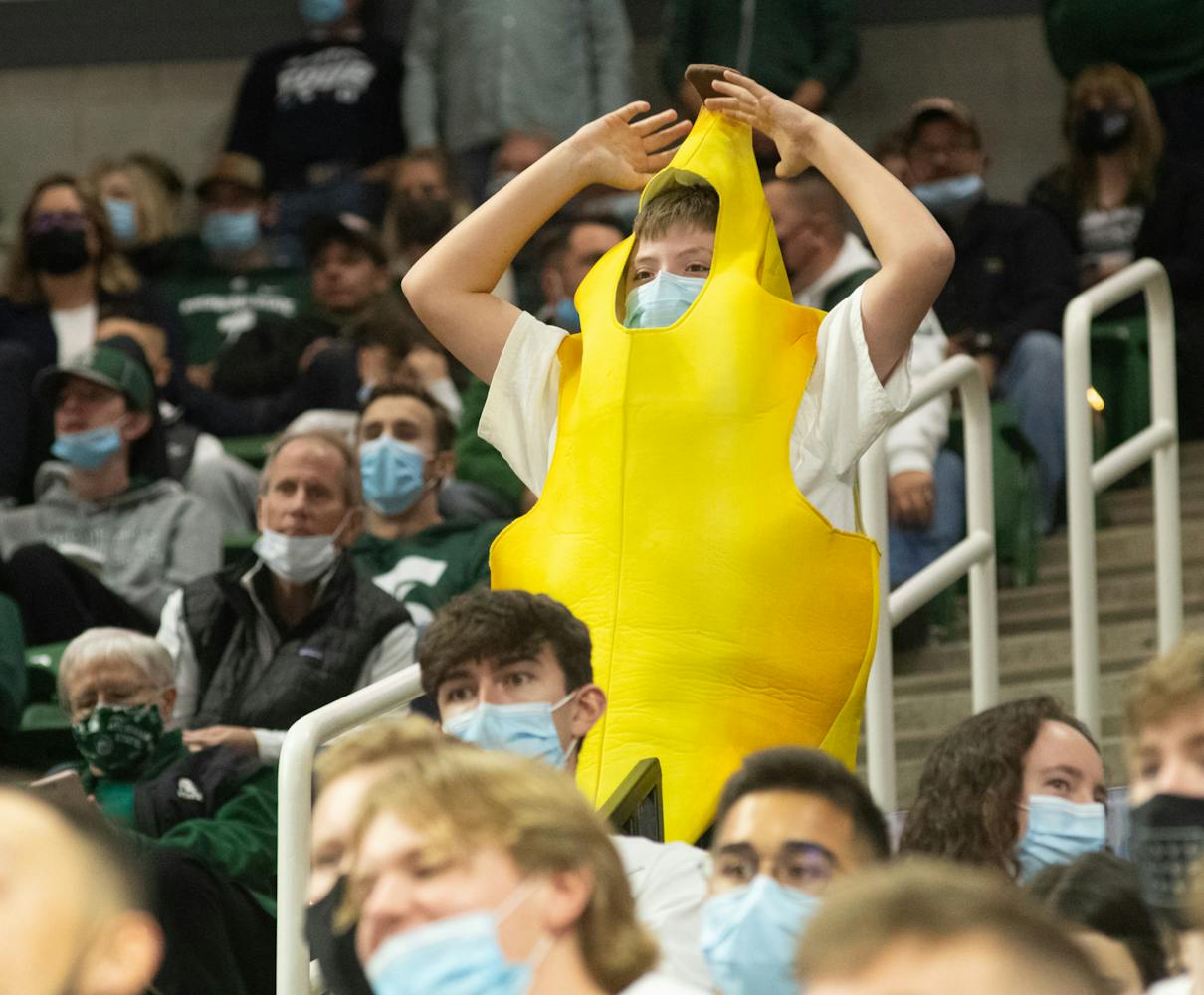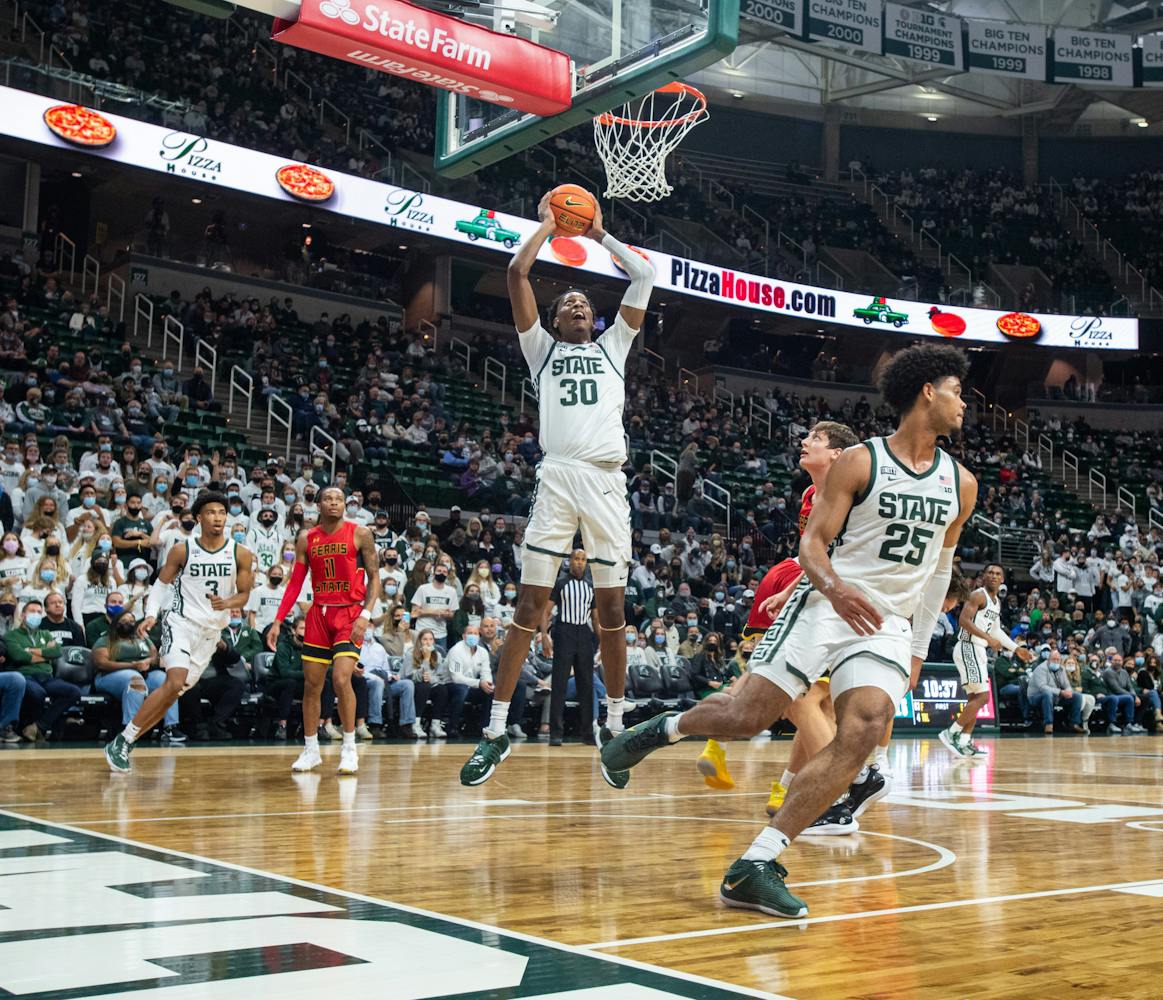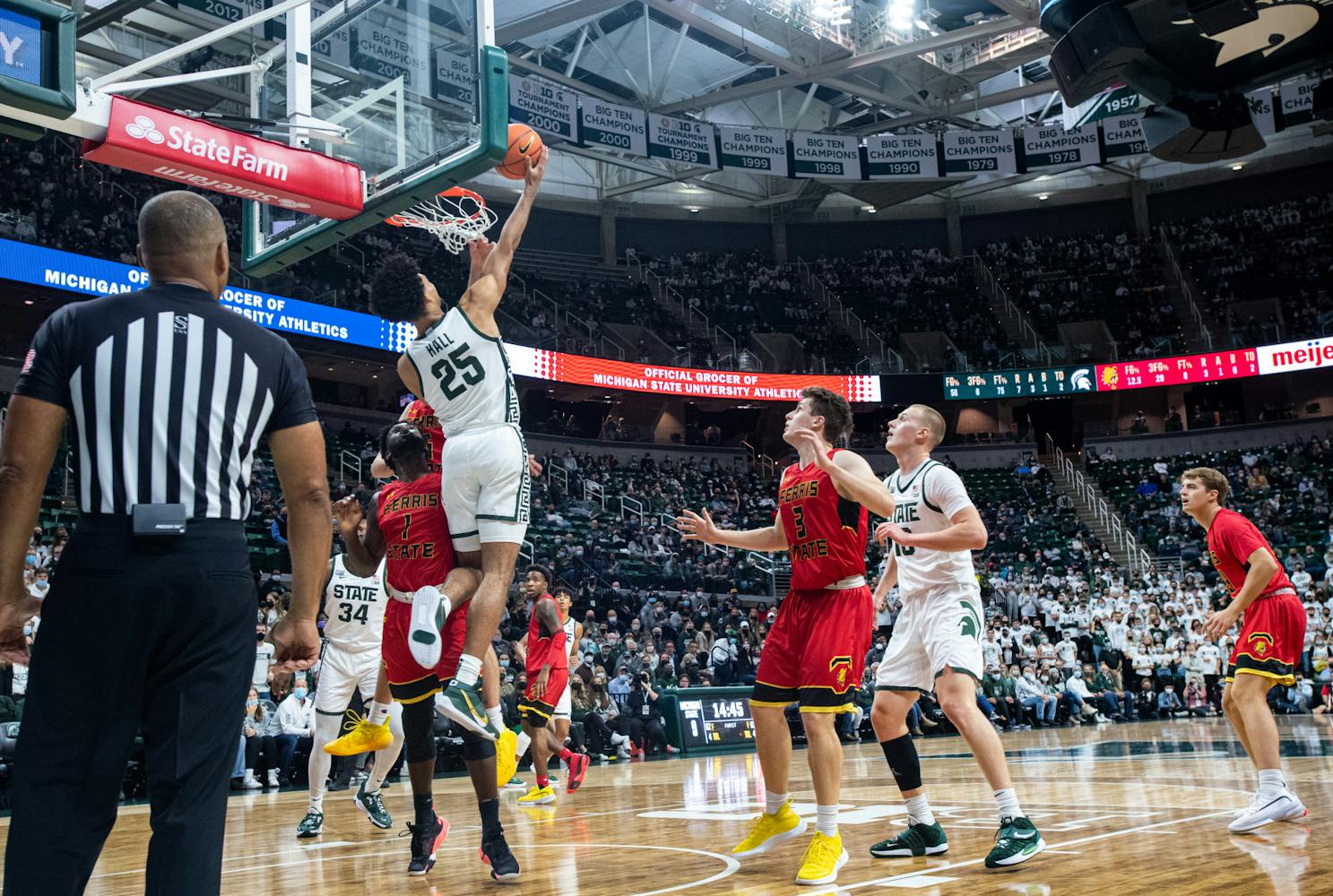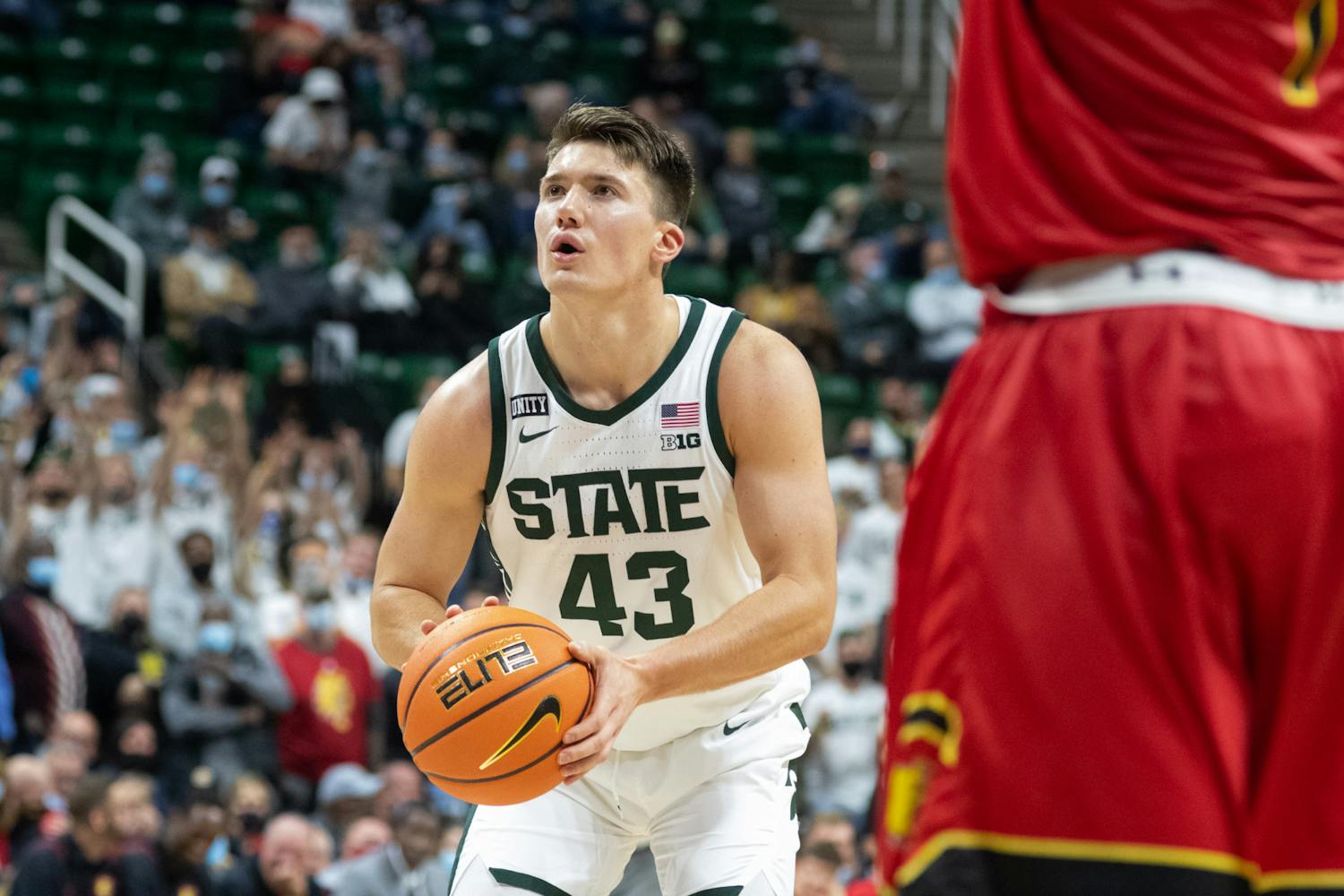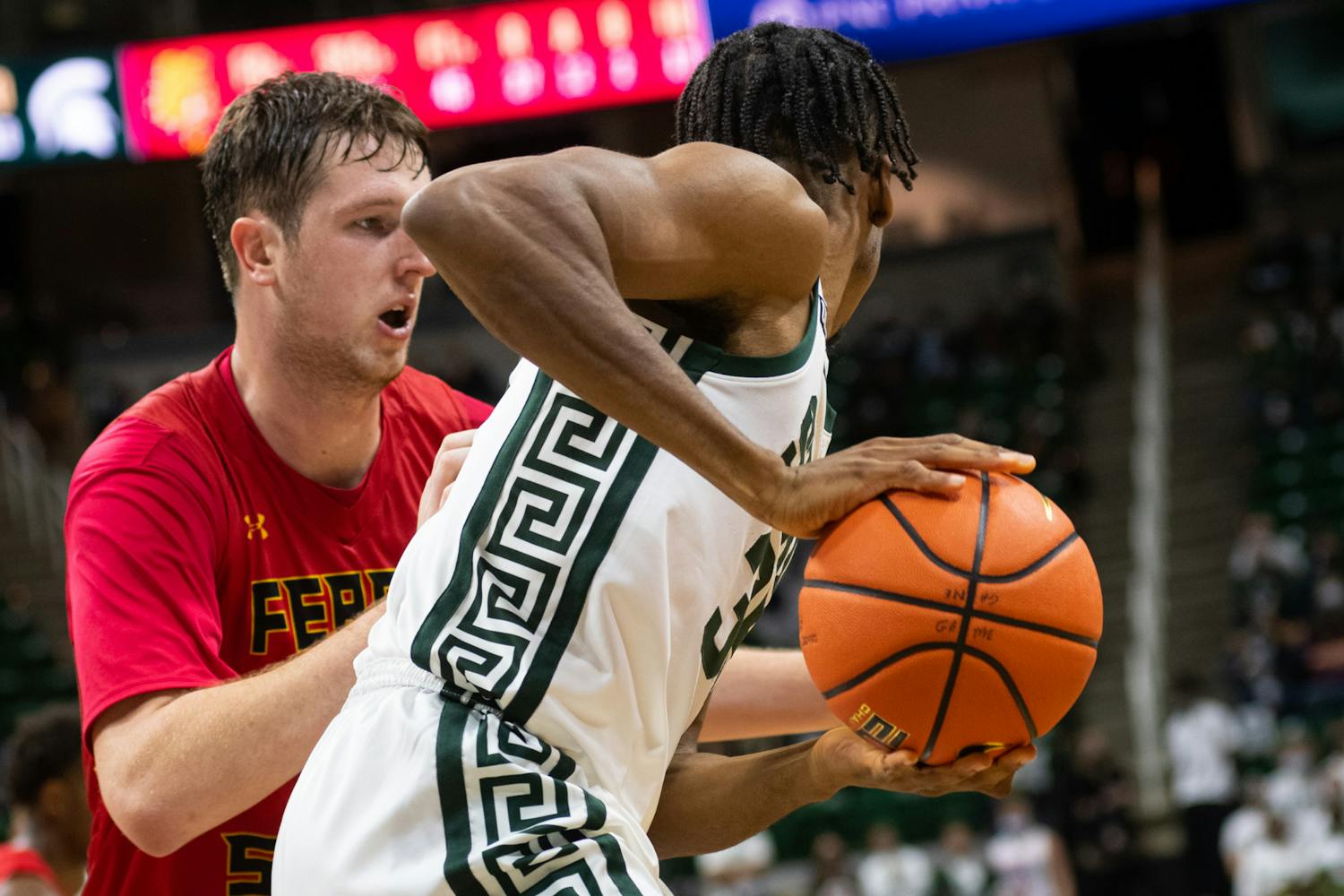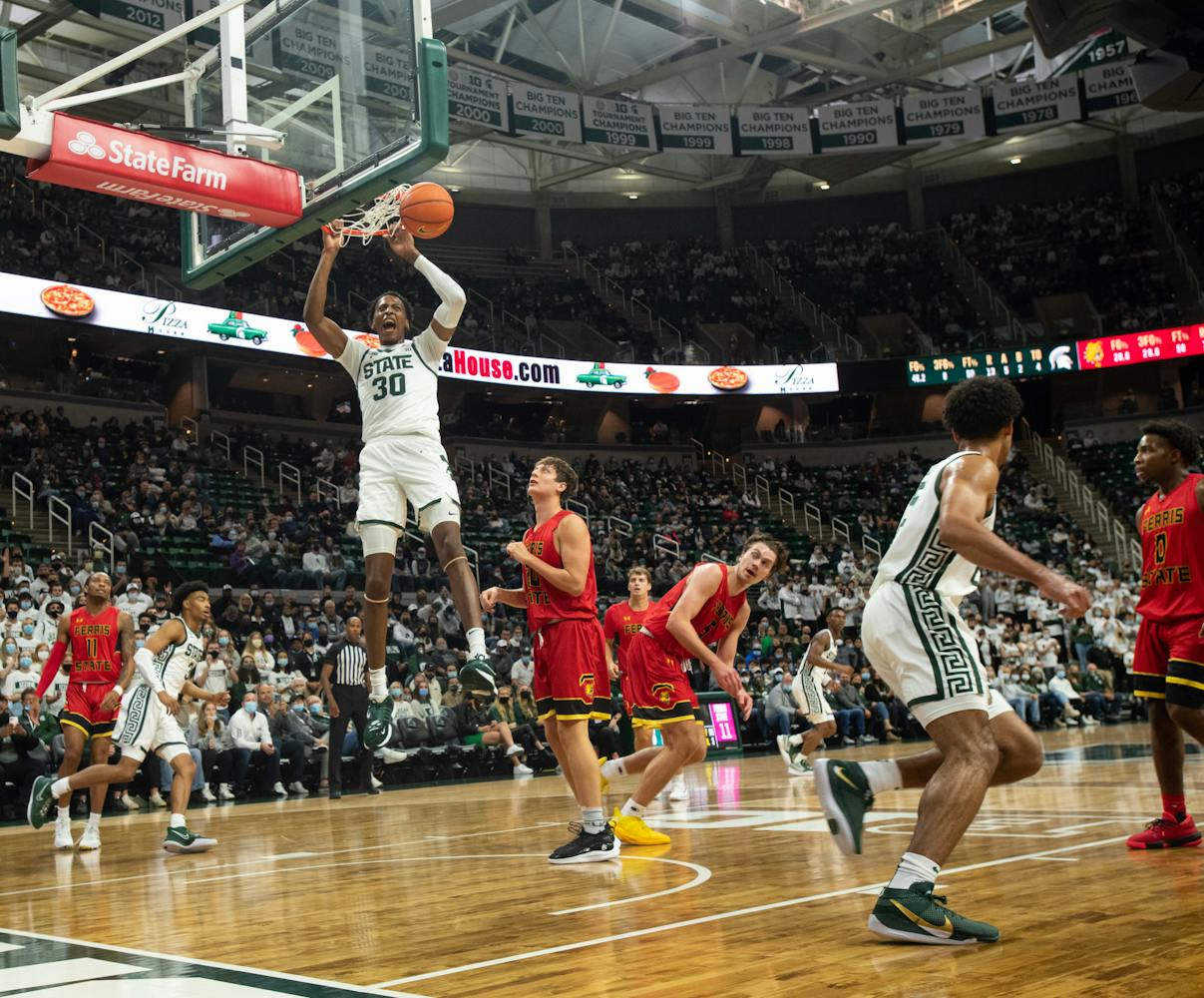Michigan State basketball, at its core, likes to run.
It’s a staple of MSU men's basketball Head Coach Tom Izzo’s best teams in his 26 years at the helm in East Lansing: charging ahead, all effort and execution, getting the defense out of position and kicking it to the wing to the heart’s desire.
So it’s not shocking Izzo has talked all preseason about how it’s been a primary focus among the team. While not the perfect metric to measure the total success of fast-paced transition offenses, the Spartans averaged 11.1 points off the fastbreak last season, with only a 9.5 average in conference play.
It certainly wasn’t a massive drop-off: Michigan State averaged 13.5 and 15.2 points off the break in their far more successful 2019-20 and 2018-19 seasons respectively. But a cratered run game exposed the lack of an extra dimension that would’ve helped cover some of the shooting woes and frequent struggles within the halfcourt offense.
Through two exhibition games, it’s been decidedly better — albeit with some kinks to work out.
In Michigan State’s 92-58 drubbing of Ferris State on Oct. 28, glimmers of promise electrified the Breslin crowd. Senior forward Gabe Brown ran hard for a highlight reel layup and was found for a made three-pointer at the tail-end of transition. Junior point guard Tyson Walker flew down the court and took it to the rim with the jet speed he’s prided himself on. Freshman guard Max Christie dazzled with some elite finishes at the basket in a coming-out party that surpassed all expectations.
And then there were some of the blunders. Walker practically handed the ball over to Ferris State freshman guard Ethan Erickson while in transition. Sophomore point guard A.J. Hoggard set out on the run for a wide-open layup-only to hesitate on the way to the basket and draw Izzo’s quiet ire.
“I was pretty ticked about it because I want to run this year,” Izzo said. “Last year, we walked the ball up the court.”
It’s absurd to say the Spartans run game wasn’t successful: they tallied 38 points off the fastbreak, their most since dropping 40 in an exhibition matchup against Northern Michigan University in 2018-19 (their highest in a regular-season game was 34 against Tennessee Tech 2018-19 as well).
Izzo said there are some quicker fixes to some of the occasional problems displayed against Ferris. The turnovers, he said, were often due to straight-line dribbling and not the staff’s preferred diagonal dribbling when in transition.
“Go hard, go fast but be under control,” Izzo said of the philosophy regarding running the break. “But (there were) a couple guys that got out of control a little bit.”
The Spartan’s exhibition game against Grand Valley State University was a slightly different story. Against a Lakers team that taunted with a press, flashed a zone and exhibited a greater defensive ability overall, Michigan State found what Hoggard considered their initial offense’s first “real” challenge.
Throughout a first half that saw the Spartans rack up a dismal six fastbreak points, there were shades of last season at hand. Relying on a halfcourt offense that wasn’t as successful as it needed to be when the Lakers took away the wing early and picked up the outlet pass. Not running and gunning but rather, walking up the court — too much control, not enough speed to split the defense.
Things did change, however.
Coming out strong in the second half, Michigan State upped the tempo and created their own bright spots. Walker got it just past Grand Valley’s free-throw line early and kicked it up to Hoggard past halfcourt. Hoggard took the ball across the baseline and put it up and in to be fouled by senior guard Isaac Gassman, his first and-one opportunity of the evening to open up another scoring session.
The hits kept coming. Senior forward Marcus Bingham Jr. got the ball on an errant pass from a Laker, hesitated for a second and sent it in Hoggard’s direction near the sideline. Hoggard kept the ball in motion and swung it over to Brown, who took it across the baseline and up for a dunk with an aggressiveness that led to another near-poster.
With big sequences like that, Michigan State tallied 16 fast-break points in the second half to finish with a game total of 22, a testament to a more aggressive and energetic final 20 minutes from players like Hoggard and Brown. Turnovers on the break dropped as well, signaling a degree of comfort with a system that’s coming together.
Of the two-point guards gathering the most attention this preseason, Izzo said Hoggard is better at pushing the ball down the court while Walker’s succeeded more in terms of finding the right pass. Izzo also stressed the need for both to communicate better and continue to find their playmakers early on the break.
“Our point guard play where you’re getting a pass where you need it, where you can shoot it not as a last resort, makes those guys better players,” Izzo said of Brown, Christie and redshirt senior forward Joey Hauser.
His maturity has shined through on and off the court so it’s no surprise Christie’s description of their break summed it up best. It’s undoubtedly Michigan State’s initial offense but it’s also their chosen method of keeping the defense on edge, tired and scrambling with each and every drive.
Support student media!
Please consider donating to The State News and help fund the future of journalism.
“We’re not going to get a bucket every single time we run the floor,” Christie said. “But I think running the floor, just by running the lane, you’re going to do your job.”
For now, it’s a project and a productive one at that. While Izzo admitted he doesn’t quite know how good the team is after going up against only Division II opponents, he said he thinks the running game is in the right spot.
Brown, one of the best lane runners on the team, is eager to finally get it going.
“That’s just one thing we’re trying to get back in the culture,” he said of their notorious fastbreak.
And it could be back sooner than expected.
Discussion
Share and discuss “‘Go hard, go fast but be under control’: Izzo, MSU players discuss revamped transition offense ” on social media.
